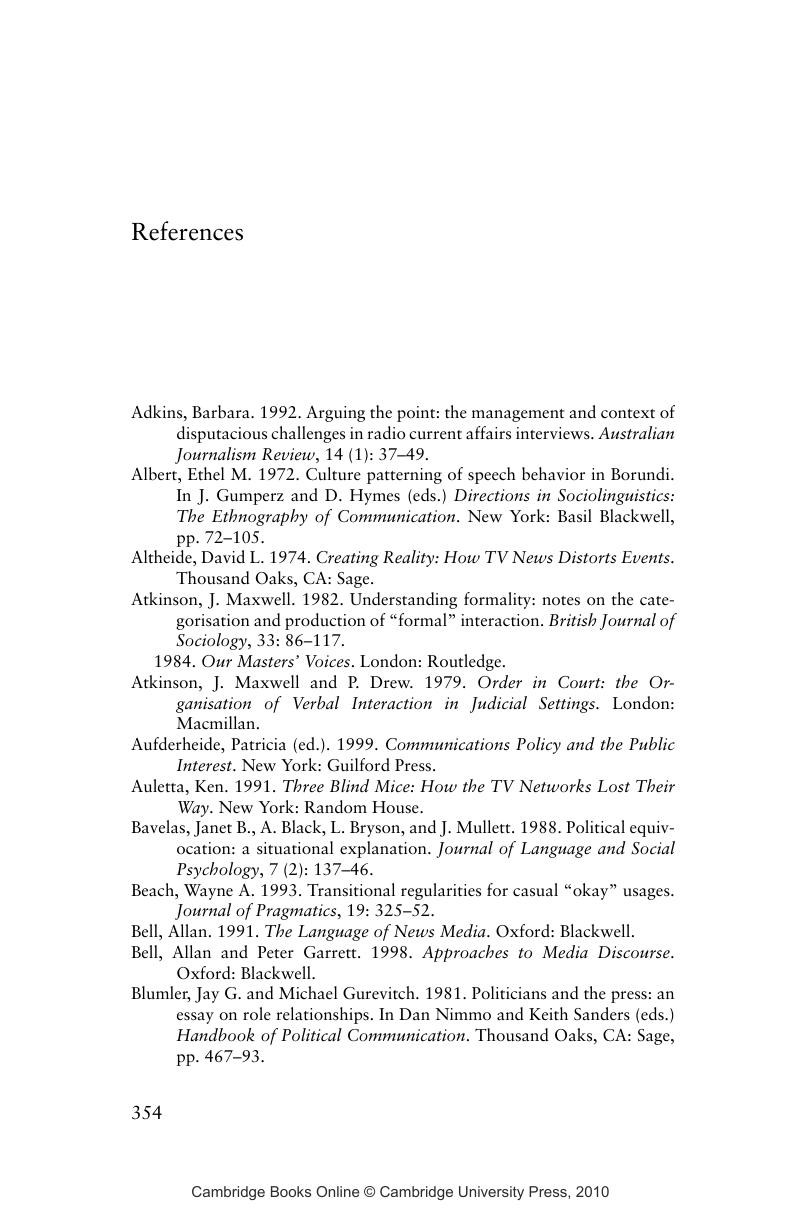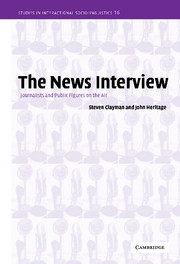Book contents
- Frontmatter
- Contents
- Acknowledgments
- 1 Introduction
- 2 The news interview in context: institutional background and historical development
- 3 Openings and closings
- 4 Basic ground rules: taking turns and “doing” news interview talk
- 5 Defensible questioning: neutralism, credibility, legitimacy
- 6 Adversarial questioning: setting agendas and exerting pressure
- 7 Answers and evasions
- 8 The panel interview: discussion and debate among interviewees
- 9 Conclusion
- Appendix: transcript symbols
- References
- Subject index
- Index of names
- References
References
Published online by Cambridge University Press: 23 November 2009
- Frontmatter
- Contents
- Acknowledgments
- 1 Introduction
- 2 The news interview in context: institutional background and historical development
- 3 Openings and closings
- 4 Basic ground rules: taking turns and “doing” news interview talk
- 5 Defensible questioning: neutralism, credibility, legitimacy
- 6 Adversarial questioning: setting agendas and exerting pressure
- 7 Answers and evasions
- 8 The panel interview: discussion and debate among interviewees
- 9 Conclusion
- Appendix: transcript symbols
- References
- Subject index
- Index of names
- References
Summary

- Type
- Chapter
- Information
- The News InterviewJournalists and Public Figures on the Air, pp. 354 - 365Publisher: Cambridge University PressPrint publication year: 2002



